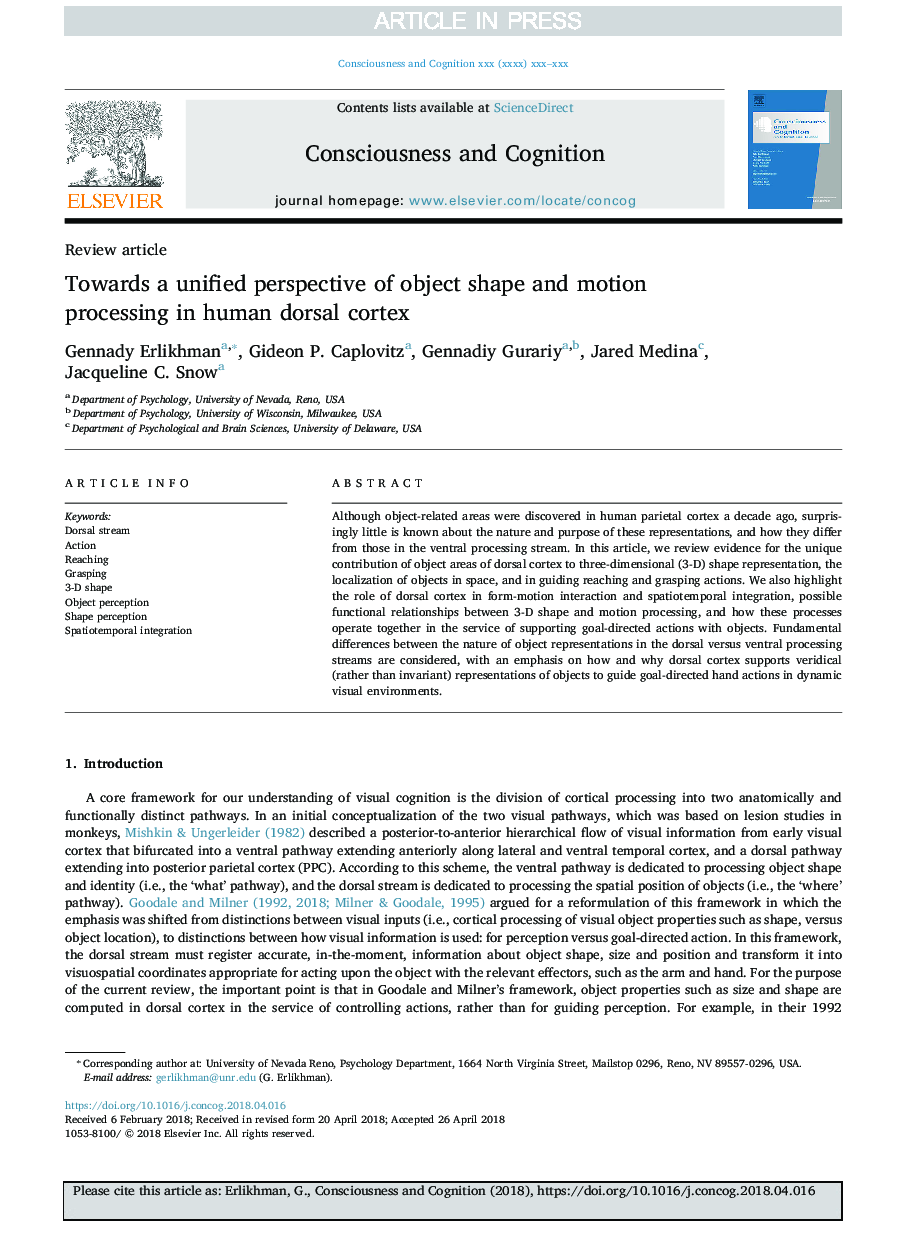| Article ID | Journal | Published Year | Pages | File Type |
|---|---|---|---|---|
| 10153424 | Consciousness and Cognition | 2018 | 15 Pages |
Abstract
Although object-related areas were discovered in human parietal cortex a decade ago, surprisingly little is known about the nature and purpose of these representations, and how they differ from those in the ventral processing stream. In this article, we review evidence for the unique contribution of object areas of dorsal cortex to three-dimensional (3-D) shape representation, the localization of objects in space, and in guiding reaching and grasping actions. We also highlight the role of dorsal cortex in form-motion interaction and spatiotemporal integration, possible functional relationships between 3-D shape and motion processing, and how these processes operate together in the service of supporting goal-directed actions with objects. Fundamental differences between the nature of object representations in the dorsal versus ventral processing streams are considered, with an emphasis on how and why dorsal cortex supports veridical (rather than invariant) representations of objects to guide goal-directed hand actions in dynamic visual environments.
Keywords
Related Topics
Life Sciences
Neuroscience
Cognitive Neuroscience
Authors
Gennady Erlikhman, Gideon P. Caplovitz, Gennadiy Gurariy, Jared Medina, Jacqueline C. Snow,
